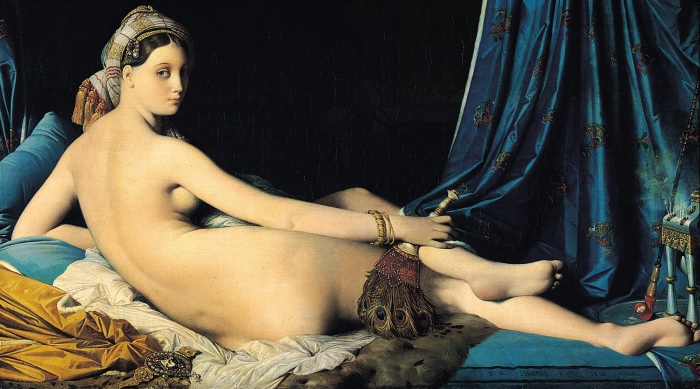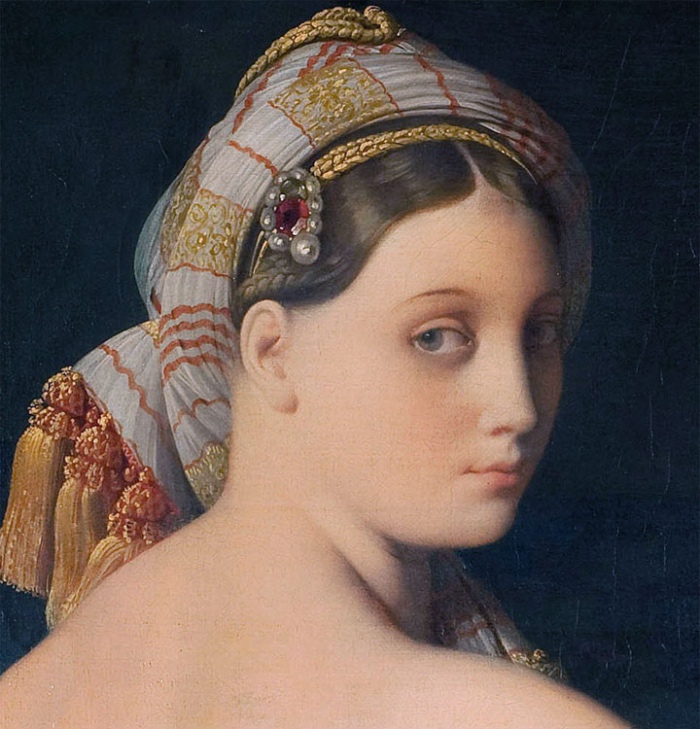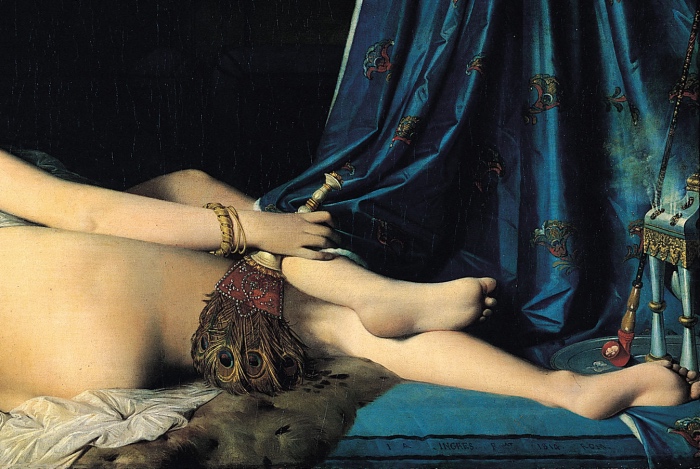The Grande Odalisque by Ingres: meaning and description

THE GRANDE ODALISQUE BY INGRES: MEANING AND DESCRIPTION OF THE PAINTING
In front of a beautiful woman such as the Grande Odalisque by Ingres I can’t help wondering who she is and why an artist decided to paint her giving her immortality.
After describing The Source by Ingres I decided to write a new post about a work by Ingres to make its meaning clear and to describe it, even though the magic of this painting remains, and like me, you could continue to imagine the story of this woman.
The Grande Odalisque by Ingres

WHO COMMISSIONED THE GRAND ODALISQUE
In 1814 artist Jean-Auguste-Dominique Ingres was commissioned the Grande Odalisque by Caroline, Napoleon Bonaparte’s sister. The woman had married Marshal Joachim Murat, become King of Naples in 1808, and wanted the painting matched another painting by Ingres portraying a nude sleeping woman.
The painting was presented at the 1819 Salon and judgements weren’t all positive, and in particular, the artist was criticized for not having described accurately the anatomy of the body of the Grande Odalisque. In addition the odalisque shouldn’t be nude because odalisques are always dressed inside the harem.
Actually, imperfections and inaccuracies Ingres painted were all done on purpose, because perfection of academic painting and a colour too precise didn’t allow the painter to put the feeling inspired by a curvy body on the canvas.
That’s why if you look carefully at Ingres’s Grande Odalisque her hips seem to be excessively wide and her right arm too long.
THE GRANDE ODALISQUE: DESCRIPTION
The Grande Odalisque is a nude woman, lying on a bed covered with fabrics.
The whole scene is occupied by her body and only the feather fan, the turban she wears on her head and few other details give us information about her provenance from an oriental country.
With this painting Ingres invented a new genre, by transposing the mythological nude to Orient and forerunning the exotic pictorial genre which would be very successful in France.
Ingres drew inspiration from some great paintings of the past such as the Venus of Urbino painted by Titian in 1538.
More than an inspiration it is a clear reference, and actually, it seems that Ingres wants to describe the side that is not visible in Titian’s painting.
However, in the Grande Odalisque there’s another reference to a masterpiece of the past. It’s the turban which is very similar to that in Raphael’s “Fornarina” ( “Portrait of a Young Woman”) (1518-1519). The pendant decorated with pearls which enhances it seems to be very similar to that, too.
THE GRANDE ODALISQUE: MEANING
Ingres is the last great artist of classical painting and the Grande Odalisque, therefore, is a 19th- century woman, a woman who isn’t subdued anymore, but is able to control her body and she uses it.
She is beautiful, has a confident look and an attitude that women learn to adopt right in that historic period full of changes.
Perfection in describing the details of fabrics, jewels and objects surrounding the woman compensates for flaws in anatomy, criticized at the 1911 Salon, but which make this painting very sensual.
WHERE YOU CAN SEE THE GRANDE ODALISQUE BY INGRES
The Grande Odalisque by Ingres has been housed in the Louvre Museum since 1899. My advice to you is to book you entrance ticket to the Louvre in advance in order to skip the line.
My advice for admiring it is to book your Louvre ticket in advance to skip the queue.
Géricault is the other great artist who dominated the French and European art scene in the same period in which Ingres was painting the Grande Odalisque.
Follow me on:
About me
In this blog, I don't explain the history of art — I tell the stories that art itself tells.



